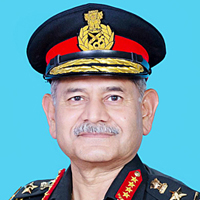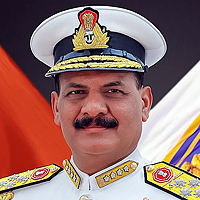INDIAN ARMED FORCES CHIEFS ON OUR RELENTLESS AND FOCUSED PUBLISHING EFFORTS

The insightful articles, inspiring narrations and analytical perspectives presented by the Editorial Team, establish an alluring connect with the reader. My compliments and best wishes to SP Guide Publications.

"Over the past 60 years, the growth of SP Guide Publications has mirrored the rising stature of Indian Navy. Its well-researched and informative magazines on Defence and Aerospace sector have served to shape an educated opinion of our military personnel, policy makers and the public alike. I wish SP's Publication team continued success, fair winds and following seas in all future endeavour!"

Since, its inception in 1964, SP Guide Publications has consistently demonstrated commitment to high-quality journalism in the aerospace and defence sectors, earning a well-deserved reputation as Asia's largest media house in this domain. I wish SP Guide Publications continued success in its pursuit of excellence.
- Appointments Committee of Cabinet approves one-month extension in service of Chief of the Army Staff
- Admiral Dinesh K. Tripathi assumes Command of the Indian Navy as 26th Chief of the Naval Staff
- Prime Minister witnesses 'Bharat Shakti' – a Tri-Services Firing and Manoeuvre Exercise in Pokhran, Rajasthan
- Interim Defence Budget 2024-25 — An Analysis
- Union Defence budget 2024
- Prime Minister Modi Commemorates Indian Navy Day in a Grand Ceremony
SEALs attack like sharks

In 1941, after the Japanese bombed Pearl Harbor, US troops were forced to invade Japanese territory by sea, often facing landmines and attacks from unseen enemies. As a countermeasure to these hazards, the US Navy began creating teams that were specially trained to go safely ashore and clear the path of obstacles and return intelligence on enemy locations.
These teams of six men were called Naval Combat Demolition Units. Their physical training was arduous and included carrying heavy loads, swimming, running, and manoeuvring in small boats. Their training also included handling explosives. Eventually, they evolved into underwater demolition teams (UDT).
In the 1960s, North Vietnam was fighting South Vietnam and President John F. Kennedy wanted to send in small teams of guerrilla fighters to help South Vietnam. With the Army’s Green Beret unit already set up, it was time for the Navy to create its own Special Operations unit. Building on the training of the UDTs, the Navy SEALs (an acronym for sea, air and land) were created. Their training readied them for the work ahead in the jungles, coasts, and rivers of Vietnam. Their task was to go behind enemy lines and raid enemy camps, sabotage supplies, cut off enemy communications, and destroy stored ammunitions.
The SEAL team often works in small units with a platoon comprising of up to 16. They are trained to perform specific tasks under any type of circumstance and in any environment.
SEAL missions require detailed planning and precise execution and are trained to perform missions that fall into categories: unconventional warfare (UW) – using guerrilla warfare tactics in battle; foreign internal defence (FID) – training given to foreign nationals in order to build relationships; direct action (DA) – moving against an enemy target; counter-terrorism and special reconnaissance.





